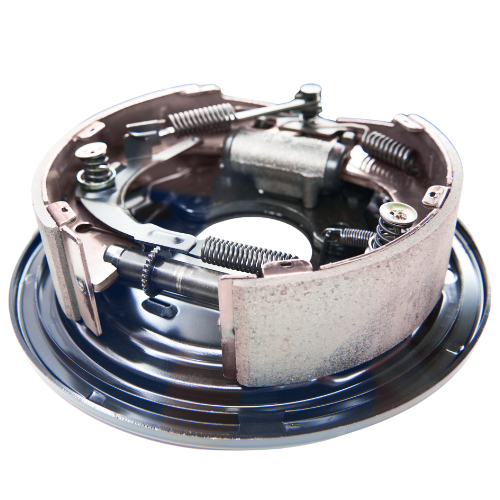Explore the four key components that make up a truck’s brake system—engineered to ensure safe, reliable, and powerful stopping performance on every road.

The procurement strategy for heavy duty commercial fleets often faces a fundamental tension between upfront component cost and long term operational expense. While a low initial price for brake parts like brake chambers or slack adjusters might seem financially appealing, a true assessment of fleet profitability requires applying the Total Cost of Ownership (TCO) model. TCO is a strategic metric that accounts for all costs associated with a component over its entire lifespan, including purchasing, installation, maintenance labor, unscheduled downtime, and premature replacement. By shifting the focus from initial savings to lifetime value, fleet managers can significantly enhance their Return on Investment (ROI) and solidify operational reliability.
Choosing low-cost, non certified brake components introduces a complex web of hidden costs that quickly erode any initial financial benefit. These costs are often overlooked in traditional accounting but surface rapidly in the form of maintenance headaches and operational chaos. A slight deviation in the manufacturing tolerance of a critical part can trigger a disproportionate financial loss across the entire fleet.
The Financial Impact of Component Failure
When components manufactured without stringent quality control fail prematurely, they generate measurable financial losses that compound over time. The failure of a single part, such as a faulty semi truck slack adjuster, forces the fleet into high-cost reactive maintenance:
Operational Drain on Asset Value
Beyond direct repair costs, cheap components actively decrease the overall lifespan and resale value of the fleet's assets by introducing damaging stress into interconnected systems.
The true cost reduction strategy lies in premium engineering and certified manufacturing. Investing in components from reliable truck brake calipers manufacturers who adhere to the highest global standards (such as IATF 16949) ensures longevity, consistency, and peak performance, driving TCO down through sheer durability.

The Role of Superior Component Quality
Premium components are designed and manufactured to withstand the extreme duty cycles of commercial trucking, maximizing the time between maintenance interventions.
A TCO driven procurement strategy necessitates a shift in criteria: price must become secondary to verifiable quality assurance. This requires fleet managers to establish stringent requirements for supplier certification, material traceability, and manufacturing process control.
Key Procurement Requirements for TCO Success
Procurement teams should demand evidence that the component supplier controls the entire manufacturing process, guaranteeing quality and consistency at every stage.
The Strategic TCO Advantage
By investing in high quality parts, fleets convert an expense into a measurable asset. Reduced maintenance frequency, minimal unscheduled downtime, and the confidence that the air brakes system will perform flawlessly under duress translate directly into increased vehicle utilization and superior ROI. This shift in perspective ensures that every procurement decision contributes positively to the fleet’s long term profitability.
GAPASA is strategically aligned with the TCO imperatives of the global trucking and logistics industry. As an IATF 16949 certified manufacturer, GAPASA’s vertically integrated production model is built not around minimizing initial cost, but around maximizing component service life and minimizing fleet downtime. This commitment to engineering excellence positions GAPASA as a partner dedicated to driving down the total operational cost for every customer.
They ensure superior performance through their control over every step of the manufacturing process, from raw material sourcing through to final assembly. Their dedication to precision and durability directly contributes to longer intervals between maintenance, reduced labor expenses, and guaranteed reliability for critical safety systems. They also offer a comprehensive portfolio of high-quality brake components designed to meet the demands of TCO-conscious fleets, including:
By choosing GAPASA, fleets invest in auditable quality, predictable performance, and a measurable reduction in the true lifetime cost of vehicle operation.
The Total Cost of Ownership model provides a clear, strategic framework for procurement decisions in commercial logistics. The short-term temptation of saving dollars on a component like a brake caliper or slack adjuster quickly dissolves when weighed against the cumulative costs of downtime, labor, and premature replacement. By shifting investment toward engineered durability and sourcing exclusively from IATF certified manufacturers, fleets secure components that perform reliably for the long term. Ultimately, this strategic procurement decision is the most effective way to maximize asset utilization, ensure driver safety, and deliver a superior return on investment across the entire operational lifecycle.